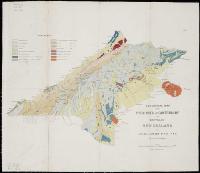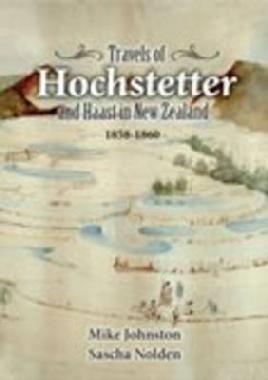Born: 1 May 1822, in Bonn, Germany
Died: 16 August 1887, in Christchurch

Life and achievements
Julius von Haast studied geology at university in Bonn, and then travelled throughout Europe, before settling in Frankfurt where he worked in the book trade.
In 1858 he was asked to travel to New Zealand to look at the opportunity for Germans to migrate there. He arrived in Auckland on 21 December 1858.
Haast soon met the geologist Ferdinand Hochstetter, and they joined forces to make geological trips in the Auckland and Nelson areas.
After Hochstetter left in 1859, Haast worked for the Nelson provincial government, exploring the western parts of the province, and looking for mineral deposits.
Surveying Canterbury
In December 1859 Haast suggested to the Canterbury provincial government that he should continue his geological survey into Canterbury.
While he was waiting for this to be decided he was asked to check the place where the Lyttelton tunnel was to go through the Port Hills.
The contractors had given up when they struck harder rock than expected, but Haast was able to back up the provincial engineer’s report on the type and amount of rock the tunnel builders would come across, and the tunnel went ahead.
Haast was made Canterbury’s provincial geologist in February 1861. He became a British subject and married Mary Dobson, daughter of the provincial engineer Edward Dobson, and sister of the surveyor Arthur Dobson.
He had to survey Canterbury and map where it was likely that minerals would be found. He made trips up the main rivers of Canterbury to their sources and explored the area around Mount Cook, and parts of the West Coast.
Haast’s reports included maps and illustrations of new plants and features. Several are named after him, including Haast Pass. Later, in 1879 he published Geology of the provinces of Canterbury and Westland, New Zealand, which was a record of his work up till that time.
Haast Pass
Runs across the main divide of the Southern Alps from the headwaters of the Makora River in Central Otago to the headwaters of the Haast River, which flows across Westland to the sea. Haast Pass is the lowest of the routes across the Alps and was used by the Māori. It was discovered in 1861 by J.H. Baker, but not crossed until 1863 when a prospector travelled it, just a few weeks before Julius von Haast.
Mineral deposits
In his geological expeditions, Haast had been able to find out the size of the Grey River coalfields that Thomas Brunner had discovered on the West Coast, and discovered a coal seam in the Buller River. He also reported traces of gold in the rivers on the coast.
Canterbury Museum
In July 1862 Haast founded the Philosophical Institute of Canterbury. The Institute was a great success and supported Haast’s goal of a museum for Canterbury.
Haast had begun a small museum collection in 1861, and this was stored in a room in the provincial council buildings.
In 1866 a large collection of moa bones in very good condition was found in a swamp at Glenmark. In 1871 Haast was the first to ‘describe’ bones of a huge raptor found with the Moa bones which was later named Haast’s Eagle, the largest eagle ever to have lived.
Haast sent complete skeletons to museums and collectors overseas, building a reputation for the Canterbury Museum, and getting specimens for the museum collection in exchange.

CCL PhotoCD 14 IMG0042
As the collection grew, so did the museum. Additions were made in 1872, 1876 and 1882, bringing the size of the museum up to 40,000 square feet.
Under Haast’s directorship, the Canterbury Museum was regarded as the best in the Southern Hemisphere, and by 1895 it was rated in the top twenty for the world.
Teaching and later life
Haast supported moves to set up Canterbury College as part of the University of New Zealand. He taught courses in geology and palaeontology, and became the first professor of geology in 1876.
Amongst other honours, Haast was awarded a gold medal from the Royal Geographical Society in 1884 for his work on moas.
Haast died on 16 August 1887 in Christchurch.
Sources
- Bateman New Zealand encyclopedia, 5th edition: David Bateman, 2000
- Canterbury Museum 100th anniversary appeal, 1972. Christchurch, [1972?]
- Dictionary of New Zealand biography, vol. 1, 1769-1869. Wellington, 1990
 Search our catalogue
Search our catalogue
- Search for items by Julius von Haast in our collection
- Search for items about Julius von Haast in our collection
Resources
Peter B. Maling. Haast, Johann Franz Julius von - Biography, from the Dictionary of New Zealand Biography. Te Ara - the Encyclopedia of New Zealand, updated 12-Jan-12.
Browse for Johann Franz Julius von Haast in the New Zealand Electronic Text Centre.
Related pages
- Benjamin Mountfort and the Gothic Revival
- About the architect of Christchurch’s celebrated neo-gothic buildings.
- The Canterbury Museum
- Originally derived from the Christchurch City Council handbook of 1998.
- Haast’s Eagle
- Haast’s eagle was the largest eagle ever to have lived. Any larger, and it would not have been able to fly.

